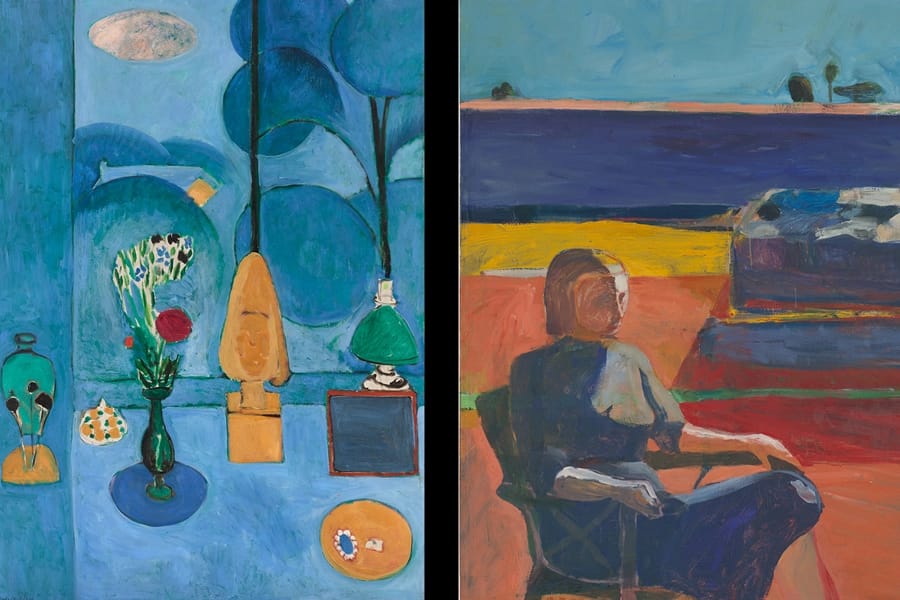 The influences of a great French master on one of the Bay Area’s best known painter is on display at SFMOMA in an exhibition called Matisse/Diebenkorn, which runs through May 29th. Richard Diebenkorn saw his first Matisse when he was in his 20s, and made a point of seeking them out for the rest of his career and life. Exhibition curator Janet Bishop says they sought specific works that showed the strongest kinship between the two artists.
The influences of a great French master on one of the Bay Area’s best known painter is on display at SFMOMA in an exhibition called Matisse/Diebenkorn, which runs through May 29th. Richard Diebenkorn saw his first Matisse when he was in his 20s, and made a point of seeking them out for the rest of his career and life. Exhibition curator Janet Bishop says they sought specific works that showed the strongest kinship between the two artists.
There’s more information about the exhibition at the SFMOMA website.
“Our exhibition follows the trajectory of Diebenkorn’s career and intersperses works by Matisse throughout,” Bishop explains. “Either paintings that Diebenkorn knew directly, paintings that were important to him, or pieces that really resonated with the Diebenkorn works in the show.” The exhibition is a collaboration with the Baltimore Museum of Art, where it ran last fall. Bishop and her Baltimore counterpart, Katy Rothkopf sought the works that made the American fall in love with Matisse. “There were several particular encounters with Matisse’s work that were meaningful to him. So we looked to see what was in Matisse’s 1952 retrospective that Diebenkorn saw in Los Angeles. We looked to see what was in the 1966 retrospective that Diebenkorn saw. We also were keen to borrow, for instance, Matisse’s Studio Quai St. Michel from the Phillips Collection, which was the first very specific work that Diebenkorn said was really important to him.” Bishop says that seeing the works together, similarities become clearer. “I think Matisse and Diebenkorn were two of the greatest colorists in the twentieth century, but there’s all sorts of connections. They both had a real interest in structure. So in the way that geometry worked in the rectangle of the canvas… Also an interest in revealing their process in the final work of art. So both artists worked layer upon layer upon layer, and neither one of them felt the need to cover their tracks. So when you’re looking at a Matisse or looking at a Diebenkorn, you often see a lot of evidence of reworking and prior versions of the final work of art.”







